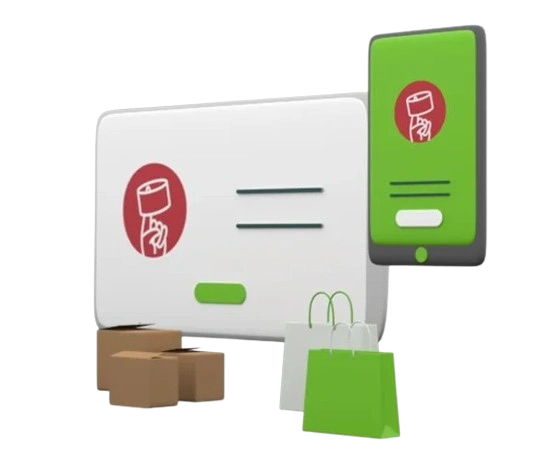Solving the Cross-Border Puzzle: Ecommerce Integration Software for Global Marketplace Inventory Sync

The allure of selling across borders is undeniable. Platforms like Amazon and eBay dominate Western markets, while Shopee, Lazada, and Zalora lead in Southeast Asia. Shopee is expecting to reach $234 billion in annual GMV by 2025 and Zalora currently servicing over 30 million users region wide. Southeast Asia’s ecommerce market alone is projected at $234 billion by 2025, up double-digits year-over-year. These trends present huge opportunities for brands and retailers, with a single online storefront reaching customers from New York to Singapore.
However, selling globally isn’t just more revenue – it’s also more complexity. Retailers must juggle multiple currencies, marketplaces, tax rules, languages, and shipping networks. Inventory that is mis-tracked or out-of-sync across channels can lead to missed sales and unhappy customers. To truly capitalize on international growth, retailers need a unified system that ties everything together. Ecommerce integration software and modern Order Management Systems (OMS) serve as that unifying layer – syncing inventory, orders and data across all sales channels and warehouses in real time.
This blog explores how ecommerce integration software acts as a middleware between marketplaces and your backend systems, solving cross-border challenges with automated syncing, compliance support, and analytics.

From multicurrency to marketplace sync, Ginesys equips you for cross-border ecommerce success.
The Cross-Border Ecommerce Opportunity
Selling cross-border lets brands tap into new customer bases and diversify revenue. Major marketplaces exemplify this shift. For instance, Shopee alone boasts over 350 million active users across Indonesia, Malaysia, Thailand, Vietnam, the Philippines, and Singapore. Regional players like Zalora have grown to 30 million+ active users in six Asian countries.
Today’s marketplace landscape is a mosaic of platforms and storefronts. Sellers on Shopee, Zalora, or Lazada gain instant access to millions of local shoppers. Likewise, selling on Amazon or eBay opens doors to North American and European customers. Consumers benefit by finding unique products from abroad, and brands gain 24/7 global storefronts.
These benefits come with unique complexities. Each marketplace has its own product catalog structure, SKU scheme, currency, tax rules, and logistics. Without careful management, inventory can become scattered. For example, if a retailer sells a popular item on both Shopee and Amazon, it’s critical to know exactly how many units remain in stock – or else a sale on one site could accidentally oversell the item on the other.
Multichannel inventory management is one of the biggest challenges in ecommerce today. Inventory mismanagement easily occurs when spreadsheets and disconnected systems try to keep up with dozens of SKUs across platforms. To succeed, retailers need centralized inventory visibility. They must automatically track stock levels, updates, and orders across every channel in one place.
This kind of unified tracking is the foundation for reliable cross-border selling, and it’s exactly what modern ecommerce integration software aims to provide.
Inventory Sync Challenges in Multi-Marketplace Selling
When selling on multiple marketplaces, several key challenges emerge.
1. Data Fragmentation
Each sales channel maintains its own inventory and order data. Manually reconciling those numbers is nearly impossible in real time. Without automatic syncing, businesses frequently experience overselling (promising orders on out-of-stock items), inventory deadlocks, and an avalanche of manual updates.
2. Timezone and Update Gaps
Global customers order 24/7. Delays in syncing stock between regions can result in one marketplace selling stock already promised on another—leading to oversells and cancelations. Multi-timezone selling also complicates cut-off times for inventory updates – a warehouse closing in one country may not align neatly with peak order times in another.
3. SKU Inconsistencies
Retailers often have different SKU codes or naming conventions across platforms. For example, “BLUE-Tshirt-L” on Shopify might be “TSHIRT-BLU-L” on eBay. If these aren’t standardized, the system cannot reliably match products sold on one channel with corresponding products on another. This often leads to phantom inventory and mismatches that require manual cleanup.
4. Returns and Restocking
Returned items from different countries need proper reintegration. A centralized OMS can automatically reinstate returned stock, whereas disparate systems often require manual approval. Otherwise returned goods may be lost in limbo, further skewing inventory counts.

Accelerate global fulfilment with Ginesys’s ERP-backed inventory control.
These synchronization issues have real consequences. Unmanaged data leads to missed sales (if items falsely appear out-of-stock) or cancelled orders and negative reviews (when orders fail). For many brands, the result is a heavy manual burden. Teams spend hours cross-checking spreadsheets, manually adjusting inventory after every sale, and fielding upset customers.
This not only sucks up labour but also hurts growth: a sale on one site might be lost because the same product just sold seconds before on another site. Without automated inventory synchronization, scaling globally is painfully inefficient.
The Role of OMS – Ecommerce Integration Software
Think of the Order Management System as middleware that sits between your sales channels (marketplaces, webstores) and your back-end (ERP, warehouses, accounting). Its job is to capture every sale and update inventory across all connected channels in real time.
1. Order Capture and Centralized Sync
An OMS intercepts orders from Amazon, Shopify, Shopee, etc., routes them for fulfilment, and then pushes inventory adjustments back to each channel. Once integrated, the OMS automatically pulls new orders from any marketplace or webstore into one unified dashboard. It can then trigger warehouse picking, shipping, and invoicing. As it processes orders, it simultaneously updates the remaining inventory counts everywhere.
For example, if 3 units of “Red Shirt, Size L” are sold on a Shopify store, the OMS will subtract 3 from that SKU in Shopify and push the updated stock level to Amazon, eBay, your physical POS system, etc. All of this happens in minutes or even seconds, eliminating the need for manual stock reconciliation.
2. Labour Reduction Through Automation
A study of a global footwear retailer found that implementing an advanced OMS allowed them to automate 98% of their orders, saving over 1,000 labour hours per year and sharply reducing order errors. With an OMS, tasks like copying order data, sending picking lists, and manually notifying channels become obsolete. Fewer human touchpoints mean fewer mistakes – for instance, the OMS can auto-validate orders against available stock, preventing unfulfilled orders from being accepted in the first place.
3. Inventory Visibility as a Single Source of Truth
Another key role of the OMS is to act as the single source of truth. It centralizes all inventory and order data, replacing scattered spreadsheets and disconnected systems. Teams can log into the OMS dashboard to:
- View current inventory by SKU
- Track order status across marketplaces
- Monitor in-transit stock between warehouses
This unified view ensures faster, more confident fulfilment. Warehouse staff can pick orders without stock worries, and customer service teams get real-time availability and delivery estimates.
4. System Integration for End-to-End Fulfilment
Beyond syncing, the OMS often integrates with other systems. A good OMS will connect to your Warehouse Management System (WMS) to route orders to the optimal location based on stock or proximity. It can also tie into shipping platforms (e.g. generating labels and tracking info), and even tax engines to auto-calc duties. In short, the OMS stitches together the entire flow from online sale to delivered package.
Choosing the Right Global Ecommerce Integration Software: What to Prioritize
Not all OMS tools are created equal. When evaluating a global ecommerce integration platform, look for these key capabilities:
1. Real-time Bi-directional Inventory Sync
The heart of cross-border selling is accurate stock levels everywhere. The OMS should instantaneously pull sales data from every channel and push updated inventory counts back to all channels. This two-way synchronization prevents overselling by serving as a trusted single source of truth for stock, ensuring every marketplace knows about sales as soon as they happen.
2. Compliance and Taxation Support
Global sellers must juggle many regulatory rules. The system should handle multi-currency pricing and conversions, automatically applying the right exchange rates. It should generate invoices with local tax or VAT compliance (for example, capturing GST in Malaysia or VAT in the EU). Ideally the OMS integrates with tax engine software to auto-calculate duties and import taxes at checkout or shipment, reducing manual calculations and errors. It should also track Service Level Agreements (SLAs) – e.g. promised ship-dates – to ensure you meet marketplace performance targets.
3. Scalable and Flexible Architecture
Cross-border operations can explode in SKU count and geographies. The OMS must scale to support thousands of SKUs, multiple warehouses, and many marketplaces. Look for cloud-based solutions that grow with your business. The system should accommodate multiple warehouses or distribution centres across regions and intelligently route orders to the nearest fulfilment location.
4. Analytics Dashboards for Insights
A good OMS provides a dashboard with sales, inventory, and performance metrics in real time. This can include things like stock aging reports (to spot deadstock), forecast demand, and fulfilment times by country. Actionable insights help managers spot trends so they can plan inventory proactively.
5. Integration Capabilities
Ensure the OMS supports plug-ins or APIs for major marketplaces and webstores (Amazon, Shopify, Magento, Shopee, etc.) out of the box. It should also connect to your ERP or POS. These built-in connectors save months of custom development and reduce failure points.
6. User Access Controls and Audit Logs
A good OMS platform lets you set permissions so only authorized staff can adjust inventory or pricing, and they log every change for compliance.

Improving Fulfilment and Customer Experience
When stock levels are accurate across all channels, orders are fulfilled without delay. This ensures customers receive what they ordered on time—boosting satisfaction and reviews. Stockouts, on the other hand, not only frustrate buyers but drive them to competitors. Systems that proactively prevent stockouts—via auto-reordering or by disabling unavailable items—help avoid these issues.
Centralized inventory updates also speed up operations. For instance, when new stock arrives at a Singapore warehouse, the OMS can instantly update counts across all channels. The item becomes available (or removed) globally in real-time, ensuring fair access and eliminating the need to manually delist out-of-stock items.
Preventing oversells avoids refunds and negative feedback. Every cancelled order damages reputation. An integrated OMS addresses this by marking items “out of stock” once depleted, preventing false availability. This accuracy builds customer trust and becomes a competitive edge.
Without automation and centralized tracking, brands risk avoidable returns and loss of customer trust. With the right OMS, inventory issues are resolved before affecting buyers—leading to higher on-time delivery, fewer complaints, and stronger ratings. These outcomes reinforce brand credibility in global markets.
Case for Automation: Cost Savings and Operational Efficiency
Automating cross-border order and inventory workflows yields a powerful trifecta: lower labour costs, reduced errors and returns, and improved customer satisfaction. Beyond better service, the automation afforded by an OMS yields significant cost savings and efficiency gains.
1. Reduced Labour Dependency
Automation significantly cuts down manual tasks. Instead of staff updating spreadsheets or switching between systems after every sale, the OMS manages order entry, validation, and reconciliation. Automating returns alone frees employees for higher-value work, lowering costs and improving productivity. The same applies to order management—fewer people can manage larger volumes with less effort.
2. Lower Error Rates and Fewer Returns
Manual processes increase the risk of errors—wrong SKUs, overselling, or mismatched orders. OMS automation eliminates many of these by validating data and syncing inventory in real time, especially across multiple channels.
Fewer errors lead to fewer costly returns. Automated syncing prevents avoidable returns and overstocking. Returns incur more than revenue loss—they add restocking, logistics, and damage-related costs. With fewer returns, margins improve, and streamlined processing ensures faster shipping and better cash flow.
3. Staff Focus on Strategic Initiatives
With order management automated, teams can shift their focus to strategic tasks—like refining product mix, analysing customer trends, or entering new markets. These activities drive far more value than routine data entry.
Data Governance and Compliance Considerations
For cross-border ecommerce, regulatory compliance and data governance are essential. A reliable OMS should manage legal, tax, and data accuracy requirements across regions without manual intervention.
1. Automating Customs Compliance
International orders require proper documentation. A capable OMS automates customs forms, applies HS codes, flags restricted items, and ensures packaging or labelling meets regional standards. This reduces the risk of shipment delays or rejections.
2. Managing Tax Compliance Globally
Different markets have different VAT, GST, and sales tax rules. A robust OMS calculates applicable taxes at checkout based on customer location and product type, handling scenarios like EU VAT MOSS or U.S. state-based tax. This ensures accurate invoicing and simplified reporting.
3. Centralized Audit Trails and Governance
A centralized OMS logs all inventory changes, price updates, and orders. These audit trails support financial reporting and reduce fraud risk. With synced data across systems, businesses gain better oversight and reduce discrepancies during audits.
4. Role-Based Access and Data Security
Sensitive data must be protected. The OMS should include encryption, access control, and user roles (e.g., warehouse staff only see pick lists, finance sees pricing). Two-factor authentication adds another layer of protection—especially important when teams are globally distributed.

Simplify your cross-border inventory sync with Ginesys’s integrated Order Management System.
Integrating with Local Logistics and Payment Partners
A global OMS must go beyond inventory syncing—it should integrate with local logistics and payment systems to support smooth cross-border operations.
Local Logistics Integration
Cross-border fulfilment is most efficient when orders are routed through regional carriers like DHL, Aramex, Blue Dart (India), or SF Express (China), enabling automatic label generation, real-time rate comparisons, and shipment tracking. An integrated Order Management System (OMS) optimizes this process by selecting the closest warehouse and most cost-effective carrier, reducing delivery times and costs.
With rising expectations for sub-two-day delivery, many businesses adopt hybrid fulfilment models—leveraging local warehouses or 3PLs while maintaining centralized inventory visibility. A robust OMS supports this by pinpointing SKU locations and intelligently routing orders to the best fulfilment node.
Regional Payment Support
Payment integration is just as critical. Every region favours different methods—digital wallets, BNPL, bank transfers, or cash-on-delivery. In Southeast Asia, ShopeePay, GrabPay, and GoPay are popular, while Europe and Latin America lean toward Klarna, iDEAL, or local e-wallets. The OMS should integrate with regional gateways to support local currencies and seamless ERP reconciliation.
Optimizing Financial Reconciliation
Regions may deduct VAT or commissions before payouts. The OMS should accurately capture these deductions, convert currencies, and sync with finance tools for automatic reconciliation—eliminating manual tracking and ensuring audit-ready financials.
Efficient Global Coordination
True integration spans the entire ecommerce ecosystem. The OMS should sync with carriers and payment services so an order in Brazil generates a local shipping label in reais, and one in Singapore is paid via GrabPay in SGD. This level of automation reduces friction and supports efficient, scalable global operations.
How Ginesys One Enables Global Inventory Management
Ginesys is an all-in-one cloud-native retail platform designed to unify online and offline operations—orchestrating everything from POS to ERP, order to fulfillment. Central to this is Ginesys One, which brings together core retail functions and a powerful Order Management System (OMS). For global ecommerce, these capabilities streamline international inventory synchronization and cross-border operations:
- ERP-integrated OMS
- Natively integrated with Ginesys One, their OMS enables real-time, bi-directional syncing of inventory and orders between marketplaces, ecommerce stores, warehouses, and ERP/POS systems—ensuring accurate stock visibility all the tim.
- Supports seamless D2C website integrations (Shopify, Magento, WooCommerce) for pricing, inventory, order batching, picking, packing, and shipping—all within one consolidated dashboard.
- Zwing Cloud POS (Web & Mobile)
- Ginesys’s Cloud POS connects physical stores—whether desktop, browser-based, or mobile—with central ERP and OMS. Sales made in-store immediately reflect in online inventory counts, and vice versa, enabling true omnichannel syncing.
- Ideal for promotions and stock adjustments, Zwing ensures stock levels remain accurate across all channels in real time.
- Multi-warehouse & Multi-site Architecture
- Ginesys One natively supports multi-company, multi-warehouse, and multi-channel operations, delivering the scalability required for global inventory management.
- Built-in APIs and marketplace integrations (Amazon, Flipkart, Myntra, Shopee, Lazada, Shopify, WooCommerce, Magento, and more) enable retailers to connect and manage all ecommerce channels centrally and efficiently.
- Ecommerce Fulfilment & Logistics Integrations
- The OMS automates order allocation to appropriate warehouses or stores based on stock availability. It integrates with shipping providers to generate labels, AWBs, manifests, and update dispatch statuses on marketplaces.
- Built-in payment reconciliation captures marketplace fees and payment info, syncing this into ERP for accurate profit and financial tracking.
- Centralized Analytics & Real-time Visibility
- Executives and operations teams gain access to live dashboards detailing inventory by warehouse, country, or channel—enabling rapid decisions on reordering, allocation, or flash sales.
- The unified platform helps retailers confidently manage global promotions without manual stock interventions.

Stay in stock and in sync across all marketplaces with Ginesys’s robust multichannel integration tools.
The promise of cross-border ecommerce is huge – but the operational puzzle is daunting. Retailers can’t thrive on international marketplaces by simply listing products and hoping for the best. They need integrated systems that synchronize inventory, automate workflows, and provide visibility across all selling channels.
By connecting your ERP, marketplaces, and stores, Ginesys creates a unified retail engine ready for global scale. Businesses that leverage such an ecommerce integration software will be well-positioned to capture the growth in international markets and turn complexity into clear, profitable expansion.
Schedule a demo with Ginesys to simplify your global selling today.
